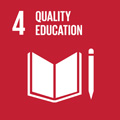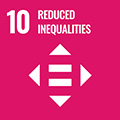- Docente: Clarissa Ricci
- Credits: 6
- SSD: L-ART/03
- Language: English
- Teaching Mode: In-person learning (entirely or partially)
- Campus: Bologna
- Corso: Second cycle degree programme (LM) in Visual Arts (cod. 9071)
Learning outcomes
Students acquire the methodology to understand and critically analyse the Art System. In particular, they develop the methodological tools to carry out independent research and they understand and recognize the historical and current roles of the System’s protagonists: artists, critics, collectors, museums, galleries, fairs.
Course contents
This course will cover the emergence and current structure of the contemporary art system. The initial lessons will focus on the circulation and legitimization of art, with an emphasis on exhibitions as a means to establish value. We will examine art as a system mainly through the concept of the "exhibitionary complex," which was introduced by the sociologist Tony Bennet and later adapted to include numerous institutions that administer value. We will also explore the controversy surrounding "emerging art" and how labels are used to describe contemporary art, as well as the various responses to nomenclature.
Throughout this course, we will analyze the various roles and institutions that influence the art system, including artists, dealers, collectors, museums, fairs, and auctions. We will examine their practices, unique qualities, and contradictions.
The course will pay particular attention to the art market and its relevance in the contemporary art world in particular we will cover the basic notions of the market, ranking systems, auctions and fairs.
Moreover, the course will significantly focus on the global distribution of contemporary art. We will dedicate a considerable amount of time to the history of biennials and the biennialisation process, with a possible visit to the Venice Biennale exhibition.
Please note that that every lesson involves a conversation about suggested readings, which the students present to enhance their ability to think critically.
The Course will touch upon the following topics:
- What is System Theory, Contemporary Art and ‘contemporaneity’
- Value Making: Reputation and Ranking Systems
- The Exhibitionary Complex
- Institutions: Museums, Fairs, Biennials
- Venice Biennale, biennials and biennalisation.
- Artists Careers between Celebrity Culture and Market Reflexive Gestures
- The Role of Mediators: Dealers, Curators, Advisors
- Collectors: Art Investment, Patronage, Private Museums
- Public, Gaze and Spectatorship
- Art Market: Auctions, Art Fairs, Art Galleries, Primary/Secondary Market, Nfts
- Art Theory and Media: Art Journals, Activism and Social Media
Readings/Bibliography
The bibliography for the course takes a multidisciplinary approach and features excerpts of artists, art historians, economists, philosophers, scientists, and sociologists, including Anthony Gardner and Charles Green, Tony Bennet, Howard Becker, Pierre Bourdieu, Daniel Buren, Arthur Danto, Andrea Fraser, Georg Franck, Natalie Heinich, Alain Quemin, Martha Rosler, Terry Smith, Hito Steyerl, Olav Velthuis, and others.
The required readings for each lesson can be downloaded by students from “Teaching resources on Virtuale”.
Non-attending students are invited to contact the professor well in advance to have indications.
Non-attending students should read the same readings of attention students on Virtuale. In place of the lessons they need to integrate with the following volumes:
- Isabelle Graw, High Price - Art Between The Market And Celebrity Culture, Sternberg Press.
- Anthony Gardner and Charles Green, Biennials, Triennials and Documenta, Blackwell-Wiley.
- Cristina Baldacci, Clarissa Ricci and Angela Vettese, eds., Double trouble in exhibiting the contemporary: art fairs and shows, Scalpendi Editore.
Teaching methods
Lectures and seminar meetings
Restricted places for incoming exchange students:
Places for incoming exchange students in this teaching activity are limited and are primarily reserved to students enrolled in art related programmes at their home university.
To check availability, please write to amac@unibo.it
Assessment methods
Oral Exam
Learning is assessed taking into account performance on an oral exam which is aimed at verifying the student’s knowledge of the material covered in the lessons and the readings assigned during the first part of the course. Therefore, questions will be asked both on the readings in the bibliography and on notes taken during the lessons.
Teaching tools
Interactive presentations, videos and PowerPoints.
Office hours
See the website of Clarissa Ricci
SDGs




This teaching activity contributes to the achievement of the Sustainable Development Goals of the UN 2030 Agenda.
